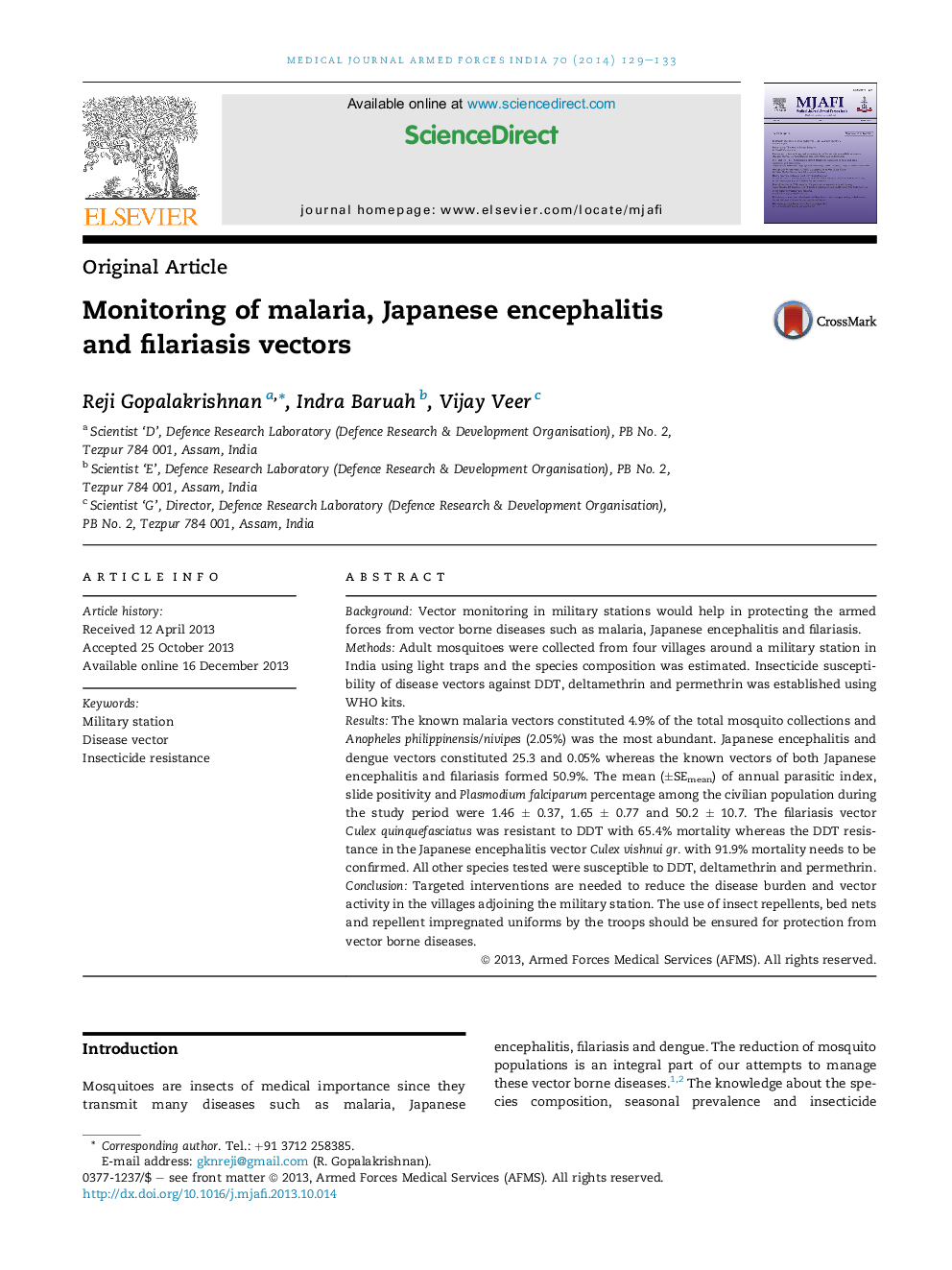| Article ID | Journal | Published Year | Pages | File Type |
|---|---|---|---|---|
| 3161339 | Medical Journal Armed Forces India | 2014 | 5 Pages |
BackgroundVector monitoring in military stations would help in protecting the armed forces from vector borne diseases such as malaria, Japanese encephalitis and filariasis.MethodsAdult mosquitoes were collected from four villages around a military station in India using light traps and the species composition was estimated. Insecticide susceptibility of disease vectors against DDT, deltamethrin and permethrin was established using WHO kits.ResultsThe known malaria vectors constituted 4.9% of the total mosquito collections and Anopheles philippinensis/nivipes (2.05%) was the most abundant. Japanese encephalitis and dengue vectors constituted 25.3 and 0.05% whereas the known vectors of both Japanese encephalitis and filariasis formed 50.9%. The mean (±SEmean) of annual parasitic index, slide positivity and Plasmodium falciparum percentage among the civilian population during the study period were 1.46 ± 0.37, 1.65 ± 0.77 and 50.2 ± 10.7. The filariasis vector Culex quinquefasciatus was resistant to DDT with 65.4% mortality whereas the DDT resistance in the Japanese encephalitis vector Culex vishnui gr. with 91.9% mortality needs to be confirmed. All other species tested were susceptible to DDT, deltamethrin and permethrin.ConclusionTargeted interventions are needed to reduce the disease burden and vector activity in the villages adjoining the military station. The use of insect repellents, bed nets and repellent impregnated uniforms by the troops should be ensured for protection from vector borne diseases.
